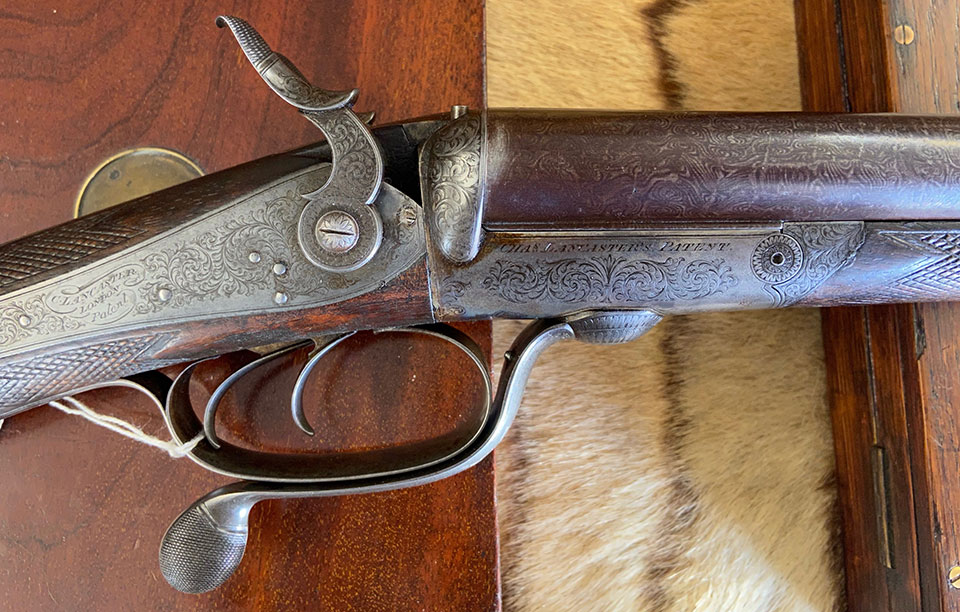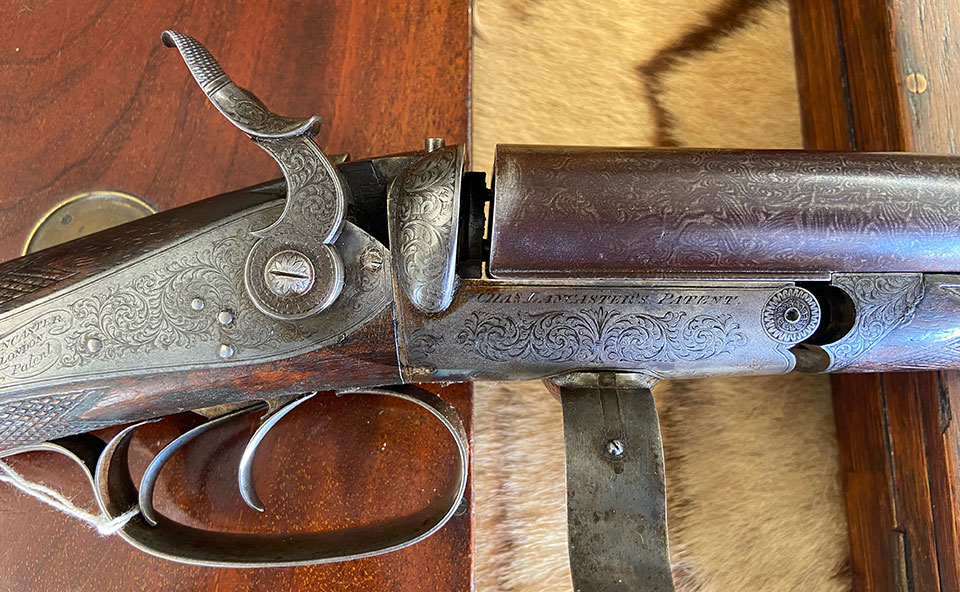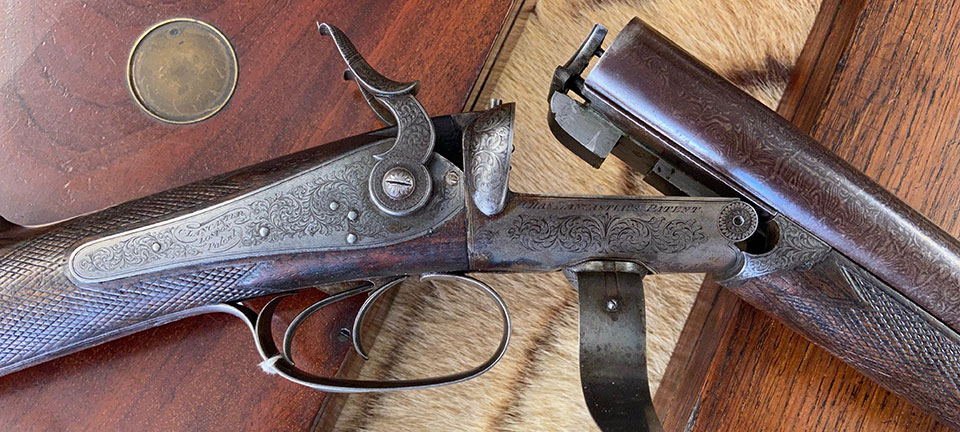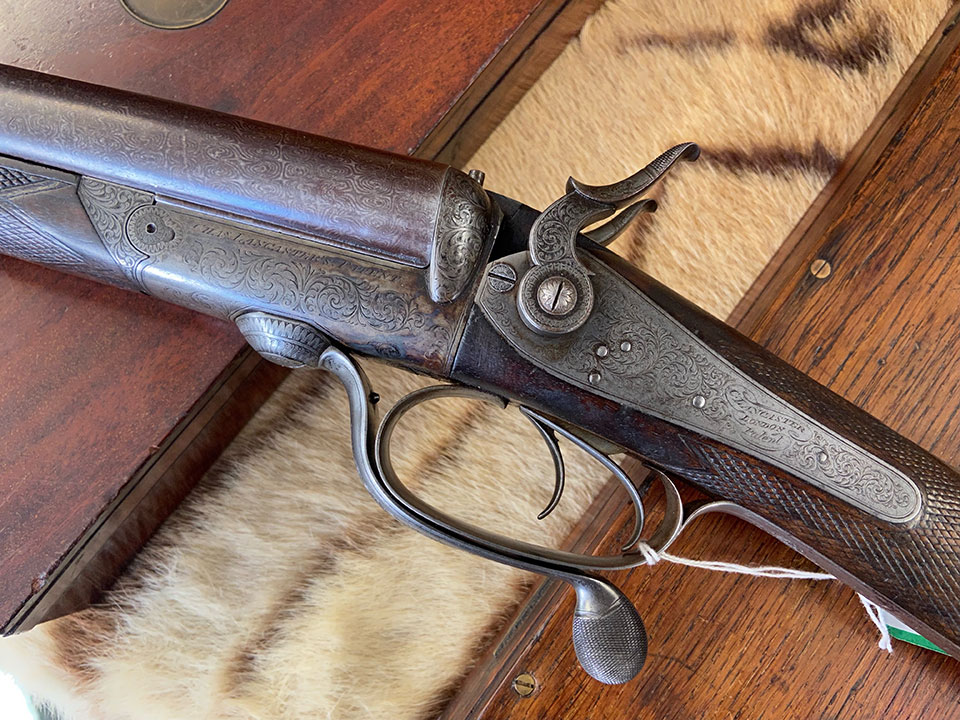The breech-loader that became the familiar companion of the Victorian sportman is poularly imagined to have started its reign with the adoption, after the Great Exhibition, of the Lefaucheaux type pin-fire guns wich Lang began selling in Britain.
However, experiments with breech-loading and drop-open guns, very similar in concept can be found by looking in a lateral, rather than linial way, at progress in the mid 19th century.
One beautiful and functional system was this one, made by Charles Lancaster. It is based on a patent lodged in France in 1853 by Gastinne. This appears to have been granted patent in Britain in 1856, with the patent holder being Auguste Loradoux, in turn it was assigned to Charles Lancaster in November 1856. So, it is an 1853 patent that probebly did not arrive in England as a production model until 1856.

It seems likely that Charles Lancaster purchased the patent rights and, as was the custom, thereafter proclaimed it 'Lancaster's Patent' in teh same manner that Purdey later put 'Purdey's Patent' on Beesley designed guns and Stephen Grant put 'Grant's Patent' on Hodges designed guns.
The action is best known for its association with Lancaster's base-fire cartridge. Early base-fires used it and they are neat, strong, elegant and effective. The strength is drawn from the two-stage locking mechanism.
The lever first pushes the barrels forward with a camming action, until the hook meets the hinge pin. There, the two surfaces meet and allow the barrels to drop on the hinge, open the gun and facilitate the removal and re-insertion of cartridges.

Minor alterations and variations feature in the development of this action and it was made as a centre-fire in the 1860s, when that system was widely adopted. The gun featured here is a 14-bore centre-fire made in the early 1860s. 14-bore was once a popular sporting gun gauge and the liking for it among muzzle-loader users transferred into the paper and brass cartridge era.
For most of the last four decades of the 19th century 14-bore cartridges were old commercially but as consilidation an d standardisation reducd the common choices, 20-bore, 16-bore and 12-bore lasted the course, while 14-bore fell into gradual obsolescence.

14-bore barrels suit this action, providing a neat appearance and lower profile than a 12-bore. Double rifles made on the Lancaster slide-and-tilt pattern are also very attractive and in proportion. Note teh angles breech face, providing additional resistance to the gun dropping open until cammed off the face.
Quality of construction and finish in these guns is always first class. A surprising number survive and I have yet to see one of less than best quality. The only major criticism of the action from a practical viewpoint is the two-stage movement, which consumes more time than does a one-stage drop-down action.
All pre-1861 Lancasters on this action are base-fires, centre-fire versions arrived with Daw's patent of Schneider's centre-fire gun and cartridge that year.
This is one of the great designs of the 19th century. Coparing it with most pinfire guns, it looks more 'modern' and altogether more eficient, not to mention attractive. I know of at least one in regular use as a hunting companion today.

Published by Vintage Guns Ltd on




